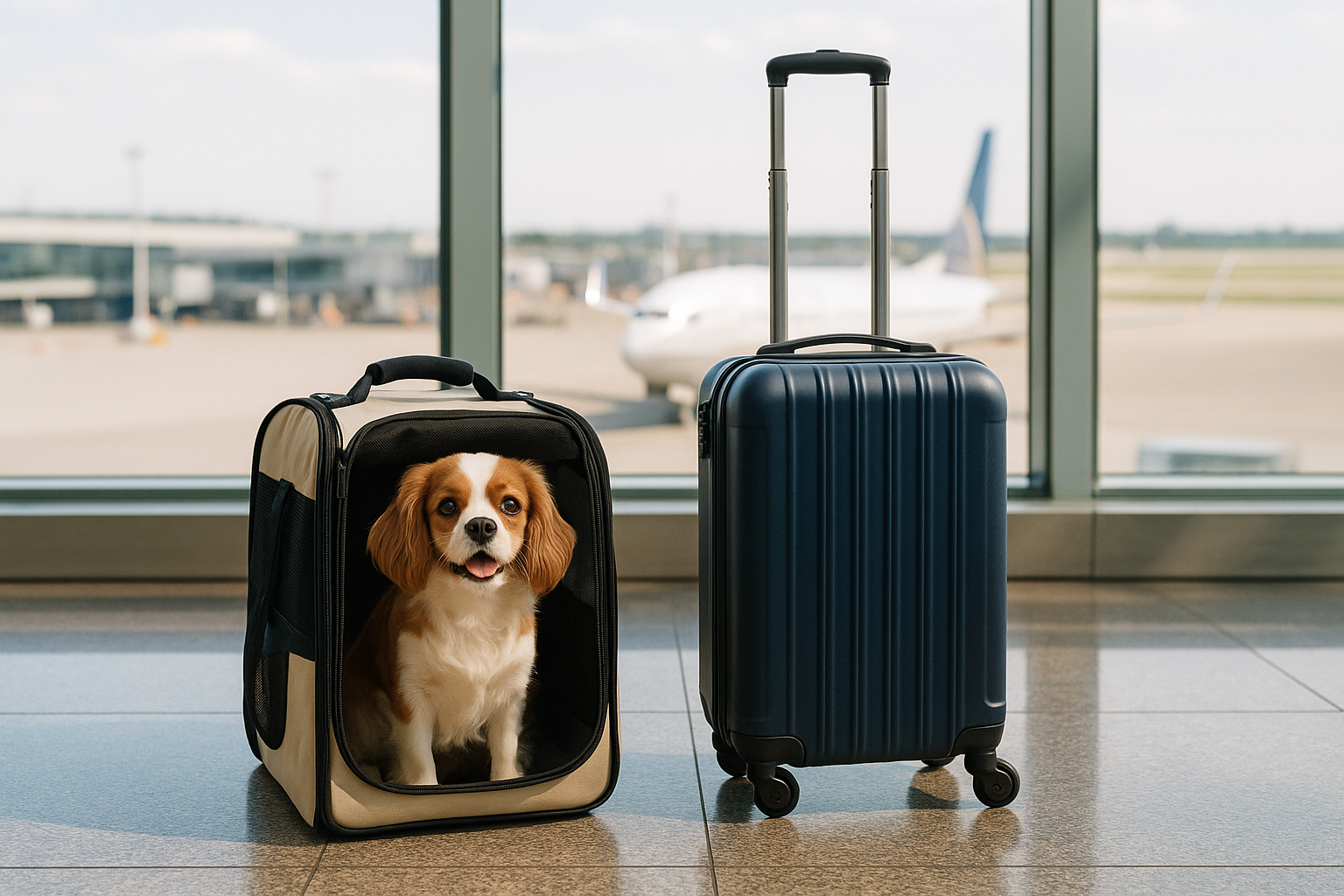Why Pet Dental Health Matters
The Importance of Dental Care for Pets
Just like humans, pets need regular dental care to stay healthy. Neglecting your pet’s teeth can lead to serious health issues, not just in their mouth but throughout their entire body. Poor dental hygiene can cause pain, infections, and even affect their heart, liver, and kidneys. By taking care of your pet’s teeth, you’re not just ensuring a bright smile—you’re helping them live a longer, happier life.
Regular brushing, dental chews, and professional cleanings are simple ways to keep your pet’s mouth in great shape. Think of it as a small investment with big rewards for their overall well-being.
Common Dental Problems in Dogs and Cats
Pets can suffer from a variety of dental issues, some of which are easy to miss if you’re not paying attention. Here are a few of the most common problems:
- Plaque and Tartar Buildup: This is the most common issue. If left untreated, it can lead to gum disease and tooth loss.
- Gingivitis: Inflammation of the gums caused by bacteria. It’s painful and can progress to more serious conditions if not addressed.
- Periodontal Disease: A severe infection that damages the gums and bones supporting the teeth. It’s irreversible but manageable with proper care.
- Tooth Fractures: Often caused by chewing on hard objects, fractures can be painful and lead to infections.
- Oral Tumors: While less common, these can be serious and require immediate veterinary attention.
If you notice bad breath, drooling, difficulty eating, or red or swollen gums, it’s time to consult your vet. Early detection is key to preventing these issues from becoming major health concerns.
Daily Dental Care Routine
Brushing Your Pet’s Teeth: Step-by-Step Guide
Brushing your pet’s teeth might sound like a daunting task, but with a little patience and practice, it can become a bonding experience for both of you. Here’s how to get started:
- Gather Your Supplies: You’ll need a pet-specific toothbrush and toothpaste. Never use human toothpaste, as it can be toxic to animals.
- Introduce the Toothpaste: Let your pet lick a small amount of toothpaste to get used to the taste. This makes the process less intimidating.
- Start Slowly: Gently lift your pet’s lips and rub the toothpaste on their teeth with your finger or a soft cloth. This helps them get comfortable with the sensation.
- Use the Toothbrush: Once they’re comfortable, introduce the toothbrush. Brush in small, circular motions, focusing on the outer surfaces of the teeth where plaque builds up.
- Reward and Praise: Always end the session with praise or a treat to create a positive association.
Remember, consistency is key. Aim to brush your pet’s teeth daily or at least a few times a week for optimal results.
📌 Need help visualizing the process?
Check out this tutorial:
Choosing the Right Toothbrush and Toothpaste
Not all dental products are created equal, especially when it comes to your pet. Here’s what to look for:
- Toothbrush: Choose a toothbrush designed for pets. They come in various sizes to match your pet’s mouth. Alternatively, finger brushes can be a great option for smaller pets or beginners.
- Toothpaste: Always use pet-specific toothpaste. These are formulated to be safe for ingestion and come in flavors like poultry or beef to make brushing more appealing.
Tip: If your pet is especially resistant to brushing, dental wipes or water additives can be a helpful alternative while you work on building their tolerance.
By investing in the right tools and maintaining a consistent routine, you’ll be well on your way to keeping your pet’s smile healthy and bright.
For a list of scientifically reviewed dental products for pets, visit the Veterinary Oral Health Council (VOHC)
Safe Dental Treats and Toys
When it comes to your pet’s dental health, choosing the right treats and toys can make all the difference. Not all products are created equal, and some can even pose risks. But don’t worry—we’re here to help you navigate the options and find safe and effective solutions for your furry friend.
Best Products for Promoting Dental Health
There’s a wide variety of dental treats and toys designed to clean teeth, reduce plaque, and freshen breath. Here are some top-rated options:
- Dental Chews: Specially formulated to scrape away plaque and tartar as your pet chews. Look for products with the Veterinary Oral Health Council (VOHC) seal of approval.
- Rubber Chew Toys: Durable and textured to massage gums and clean teeth. Ensure they’re made from non-toxic materials and are the right size for your pet.
- Interactive Treat Dispensers: Combine playtime with dental care by encouraging chewing and problem-solving. These can also help reduce boredom!
- Natural Chews: Options like bully sticks, antlers, or dried sweet potato chews can be great, but always supervise your pet to prevent choking.
How to Select Safe and Effective Options
With so many choices, it’s easy to feel overwhelmed. Here’s a simple guide to picking the best dental treats and toys for your pet:
- Check the Ingredients: Avoid treats with artificial colors, flavors, or preservatives. Opt for natural, high-quality ingredients.
- Size Matters: Choose products that are appropriate for your pet’s size. A toy or treat that’s too small can be a choking hazard, while one that’s too large may be ineffective.
- Look for Durability: Ensure the product can withstand your pet’s chewing habits. Flimsy toys can break apart and cause harm.
- Supervise Playtime: Even the safest products should be used under supervision. Watch for signs of wear and replace items as needed.
- Consult Your Vet: If you’re unsure about a product, ask your veterinarian for recommendations. They know your pet’s needs best!
And remember, while dental treats and toys are a great addition to your pet’s oral care routine, they’re not a substitute for regular brushing or professional cleanings. Balance is key!
Professional Dental Check-ups
When to Visit the Vet for Dental Care
Just like us, our pets need regular dental check-ups to maintain their oral health. But how do you know when it’s time to visit the vet? Here are some signs to watch for:
- Bad breath that doesn’t go away, even after brushing.
- Difficulty eating or a sudden lack of interest in food.
- Red, swollen, or bleeding gums.
- Yellow or brown buildup on their teeth.
- Excessive drooling or pawing at their mouth.
Even if your pet isn’t showing these symptoms, it’s a good idea to schedule annual dental check-ups. Prevention is always better than cure, and catching issues early can save your pet from pain and expensive treatments later.
What to Expect During a Dental Cleaning
If it’s your pet’s first dental cleaning, you might be wondering what the process involves. Here’s a quick rundown:
- Pre-exam: The vet will examine your pet’s mouth to assess the level of tartar, plaque, and any signs of gum disease.
- Anesthesia: To ensure your pet stays still and comfortable, they’ll be placed under anesthesia. Your vet will discuss the process and risks beforehand.
- Cleaning: The vet will use specialized tools to remove plaque and tartar from both above and below the gumline. This is followed by polishing to smooth the teeth and prevent future buildup.
- Extractions (if needed): If any teeth are severely damaged or infected, they may need to be removed. The vet will discuss this with you after the cleaning.
- Recovery: Your pet will be monitored as they wake up from anesthesia. Most pets recover quickly and are back to their normal selves within a day.
Don’t worry—your pet is in good hands! Veterinarians are trained to make the process safe and stress-free for your furry friend. Plus, regular cleanings can prevent serious health issues down the road, like heart or kidney problems linked to poor dental health.
Signs of Dental Problems

How to Spot Early Warning Signs
Detecting dental issues early can save your pet from discomfort and more serious health problems. Keep an eye out for these common signs:
- Bad breath: While it’s normal for pets to have a mild scent, persistent foul odor could indicate plaque buildup or infection.
- Difficulty eating: If your pet hesitates to eat, chews on one side, or drops food, it might be due to mouth pain.
- Red or swollen gums: Inflammation is a clear sign of gingivitis or periodontal disease.
- Excessive drooling: This could signal oral discomfort or an underlying issue.
- Visible tartar: Yellow or brown buildup on teeth is a red flag for dental problems.
If you notice any of these signs, it’s time to take action before the issue worsens.
What to Do If You Suspect a Dental Issue
If you suspect your pet has a dental problem, don’t panic. Here’s what you can do:
- Inspect their mouth gently: Look for redness, swelling, or unusual growths. Be careful not to stress your pet.
- Consult your vet: Schedule an appointment for a professional examination. Vets can diagnose the issue and recommend treatment.
- Start a dental care routine: Brush your pet’s teeth regularly and use dental chews or toys to reduce plaque buildup.
Remember, early intervention is key to keeping your pet’s smile healthy and pain-free!
Preventing Dental Disease
Tips for Maintaining Long-Term Dental Health
Keeping your pet’s teeth healthy is a lifelong commitment, but it doesn’t have to be overwhelming. Here are some simple yet effective tips to ensure your furry friend’s smile stays bright and healthy:
- Brush their teeth regularly: Aim for daily brushing using a pet-safe toothbrush and toothpaste. Start slow and make it a positive experience with treats and praise.
- Use dental chews and toys: These can help reduce plaque and tartar buildup while keeping your pet entertained. Look for products approved by veterinary dental associations.
- Schedule regular check-ups: Annual dental exams with your vet can catch early signs of dental disease and prevent bigger problems down the road.
- Watch for warning signs: Bad breath, drooling, or difficulty eating could indicate dental issues. Don’t hesitate to consult your vet if you notice anything unusual.
The Role of Diet in Dental Care
What your pet eats plays a significant role in their dental health. A balanced diet not only supports overall well-being but also helps keep their teeth strong and clean. Here’s how to make diet work for your pet’s dental care:
- Choose high-quality food: Opt for pet food that’s formulated to promote dental health. Some kibble is designed to reduce plaque and tartar buildup.
- Limit sugary treats: Just like in humans, sugary snacks can lead to tooth decay. Stick to healthy, low-sugar options.
- Incorporate crunchy foods: Crunchy vegetables or specially designed dental treats can help scrape away plaque naturally.
- Stay hydrated: Plenty of fresh water helps wash away food particles and bacteria, keeping your pet’s mouth cleaner.
Remember, a little effort goes a long way in preventing dental disease. By combining good habits with the right diet, you’re setting your pet up for a lifetime of healthy smiles!
Fun and Easy Dental Care Tips
Taking care of your pet’s dental health doesn’t have to feel like a chore—it can be fun for both of you! With a little creativity and consistency, you can make dental care an enjoyable part of your daily routine. Here’s how:
Turn Brushing Into a Game
Make teeth brushing a positive experience by turning it into a game or a bonding activity. Start slow, letting your pet sniff and lick the toothpaste (always use pet-safe toothpaste!). Reward them with praise, treats, or a quick play session afterward. Over time, they’ll associate brushing with something fun!
Use Dental Toys and Chews
There are plenty of toys and chews designed to promote dental health while keeping your pet entertained. Look for products approved by veterinary associations, such as:
- Rubber chew toys with textured surfaces to reduce plaque
- Dental chews that clean teeth as your pet gnaws on them
These options are great for pets who aren’t fans of brushing.
Incorporate Dental Care Into Playtime
Why not combine dental hygiene with play? For example, you can:
- Use a dental toy during fetch or tug-of-war
- Hide treats in a dental puzzle toy to keep them engaged
This way, your pet gets mental stimulation and cleaner teeth at the same time!
Make It a Routine
Consistency is key when it comes to dental care. Set a regular schedule for brushing, whether it’s daily or a few times a week. Pair it with another routine activity, like feeding or bedtime, so it becomes a natural part of your day.
Celebrate Small Wins
Remember, every little step counts! If your pet lets you brush one tooth today and two tomorrow, celebrate that progress. Positive reinforcement goes a long way in building good habits.
FAQs
- How often should I brush my pet’s teeth?
- Ideally, you should brush your pet’s teeth daily, but even a few times a week can make a big difference.
- What if my pet hates brushing?
- Start slow and be patient. Use dental toys, chews, or even a finger brush as alternatives. If they still resist, consult your vet for other options.
- Are dental treats effective?
- Yes, but choose vet-approved products. They’re not a substitute for brushing but can help reduce plaque and tartar buildup.
By making dental care fun and easy, you’ll not only keep your pet’s teeth healthy but also strengthen your bond. Happy pets, happy smiles!
Content you might like:
🔗How to Boost Pet Immunity: Simple Tips for a Healthier Companion
🔗4 Essential Types of Pet Insurance: Pros and Cons 🐾
🔗Are Pet Medical Expenses Tax Deductible in Canada?

Passionate about animals and an expert in pet behavior, I created Pawfect Life to help you better understand and care for your companion—whether they have fur, scales, or feathers. Here, I share practical tips and reliable information to ensure a happier, healthier life for your pet. Let’s embark on this journey together! 🐾✨





